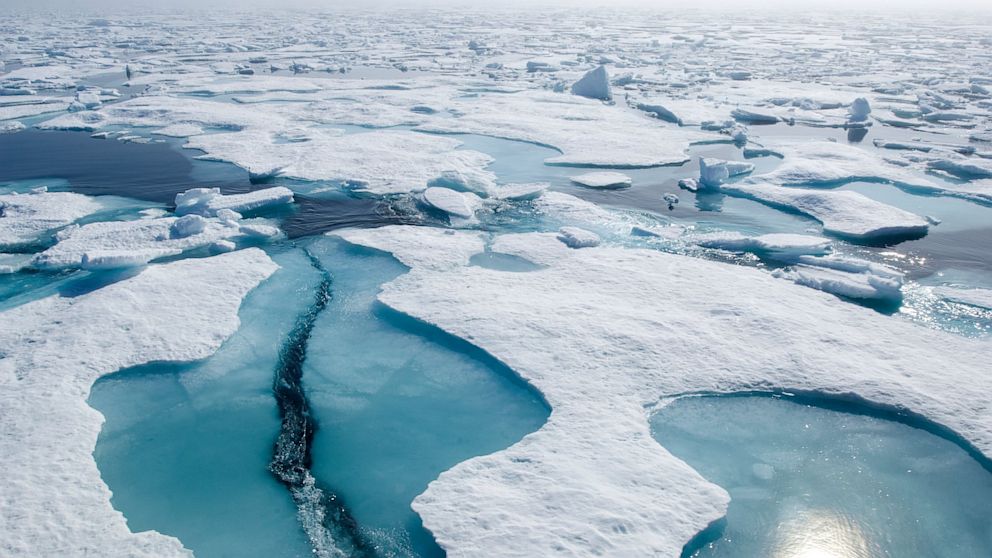Tourists Trapped on Canadian Ice Floe Back on Land
A group of 20 tourists, including two Americans, were stranded on an ice floe.

June 26, 2013 — -- A group of 20 tourists, including two Americans, are back on land after being trapped on a drifting ice floe in the Canadian Arctic.
The tourists were camping out on the ice floe just north of Arctic Bay, Nunavut, as part of a tour with the guide company Arctic Kingdom. They routinely takes tourists, film crews and scientists to camp in an area that is very active in whale and polar bear migrations as well as near a national park.
The 20 people who were out on a tour earlier this week included visitors from the U.S., Jordan, France and Australia. There was also an Inuit hunting group of between 10 and 12 people about 20 miles away that also became stranded on the ice floe.
Arctic Kingdom's president and chief expedition officer Graham Dickson believes it was irregular weather patterns that led to the ice floe's moving away from the land and stranding the group.
"What was unique right now is there was a supermoon a couple of days ago. There was a very large tide that combined with a strong wind from the South," Dickson told ABCNews.com today. "As a result, we believe it raised a lot of ice with the tide and then the wind pushed some very large ice inlets--as much as 30 miles in size--out away from the shore."
The tour group was planning to camp out there for the entire week so they had plenty of equipment, Dickson said, including food, heated tents, dining tents and kitchen equipment.
"Nobody was in any immediate danger at any time," Dickson said, but he emphasized that the situation still called for caution.
"They were moving and whenever you're on moving ice you have to take precautions because if it keeps moving or if it were starting to break up, then that could be dangerous," he said. "So you need to anticipate what could happen."
Despite the trapped people's being well-equipped, the Royal Canadian Air Force dropped survival kits with additional equipment on Tuesday morning. The kits included satellite phones so that the group could be in constant contact with the rescue coordination center, according to Major Steve Neta of the RCAF.
The ice they were on was between five and 10 feet thick.
On Tuesday night, the wind switched direction and the ice moved close enough to shore so that everyone could get off the ice floes.
"Both groups were able to get back to solid land, which was the best of all outcomes," Dickson said. "The idea that a 30-mile section would move all at once is extremely [unusual] ... it's the first time in 14 years of running trips that that happened."
But this is not the end of the ordeal.
"They're all safe on shore but they do still need to be extracted from where they are to a local area that's more accessible. Right now, they're on a shoreline where they're not able to get out from there," Neta said. "We're still planning to go in with a helicopter and extract everyone to a town nearby."
He said weather conditions, including low-lying fog, have prevented the helicopters from picking up the people yet but that conditions are being closely monitored.
"It's still a fluid situation and we're going to see how it develops over the day, but we're definitely looking forward to a positive outcome," Neta said.




